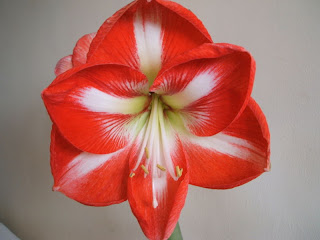In the early spring of northeast Florida we begin to see signs of what many of us call the Amaryllis flower - a tall spike of large showy flowers emanating from a bulb in the ground. In cooler parts of the country these bulbs are grown in pots indoors and are sold around the holidays. Our climate enables us to put these beauties in our landscaping and enjoy their return each year, as well as their thriving propagation.
What may surprise you is that this flower is not an Amaryllis at all, but rather a Hippeastrum, according to botanists who have been divided on the issue for centuries! A true Amaryllis is a South African bulb related to the Hippeastrum, a flower which originates in South America. The decision was made official in 1987 but that has not changed the common (incorrect) classification.
Other facts of note regarding the Hippeastrum:
1) It includes about 90 species and 600 plus hybrids and cultivars.
2) Some Hippeastrum have evergreen leaves and some deciduous (seasonal).
3) This flower usually has six petals, three on the outside and three inside.
4) Depending on the species, there may be two or as many as 15 flowers on one stem.
5) Some varieties of Hippeastrum are air plants, which is why the bulbs need exposure to air.
6) The plants can be food sources for butterfly and moth larva.
7) Hippeastrum is Greek for "knight's star", most likely a reference to the morning star weapon.
8) These bulbs do not respond well to frost or too much watering.
9) The first commercial growers of Hippeastrum were the 18th Century Dutch.
10) There are five types of flowers: single, double, miniature, cybister, and trumpet.
🦚Article by Connie Helena, author of The Green Orchid 🦚
